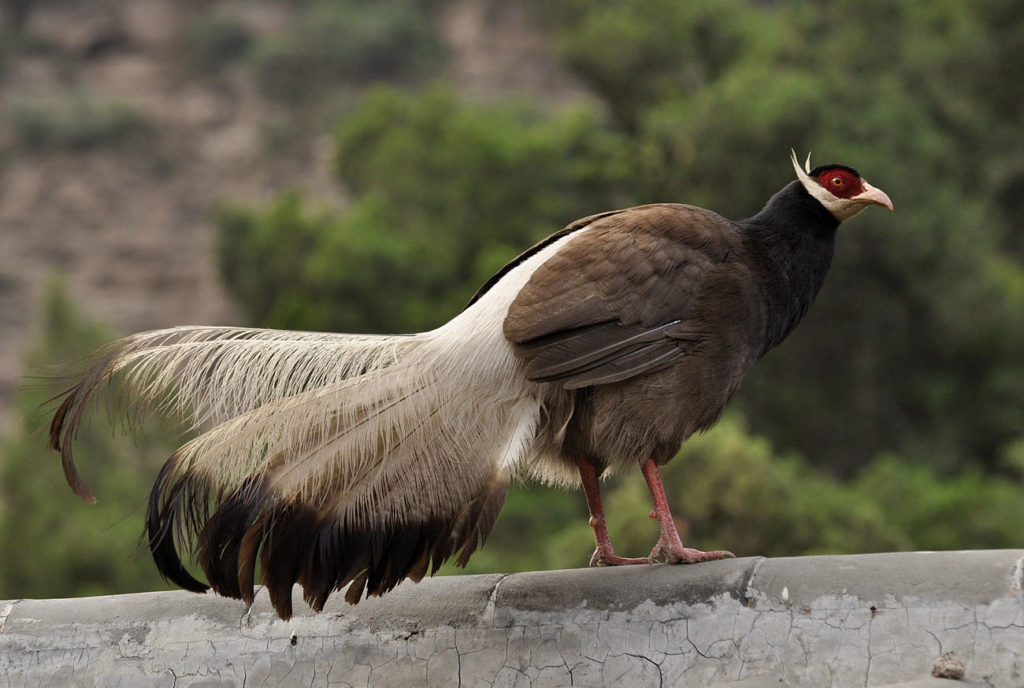Brown Eared Pheasant
(Crossoptilon mantchuricum)
Other Names: Manchurian Eared Pheasant
Range: Northeastern China
Habitat: Coniferous/Deciduous forests
Description: Brown Eared Pheasants are large, and have red, exposed facial skin around the eyes. They have a crown of velvety, black feathers, and their “ears” are white feathers that begin below the chin and extend over the head.
Their tail feathers are long and somewhat fluffly-looking, and their bodies are covered in dark brown, sleek plumage, down to the base of the tail, where the feathers are a beautiful, silvery grey.
Unlike most types of pheasants, the male and female Brown Eared Pheasants look quite similar. The main difference is the spur. Males have large, rounded spurs, while females have smaller, oblong-shaped spurs. There legs are red.
Status in the wild: Brown Eared Pheasants are the rarest of the four types of eared pheasants. The International Union for the Conservation of Nature (ICUN) lists them as Vulnerable, due to deforestation and hunting in their native habitat.
Avicultural Data
Status in aviculture: While rare in the wild, Brown Eared Pheasants are fairly common in aviaries and zoos.
Breeding Season: Late March or April through June
Clutch Size: 5-8 eggs
Incubation Period: 26-27 days
Miscellaneous Notes: Brown Eared Pheasants are excellent diggers and in the wild eat mostly roots and tubers.
Most of the year, except for breeding season, Brown Eared Pheasants live in flocks of 10-20 birds. In late March, they separate into monogamous pairs.

